Plan and manage procurement
Enablers
- Define external resource requirements and needs. (ECO 2.11.1)
- Communicate external resource requirements. (ECO 2.11.2)
- Manage suppliers/contracts. (ECO 2.11.3)
- Plan and manage procurement strategy. (ECO 2.11.4)
- Develop a delivery solution. (ECO 2.11.5)
Deliverables, and Tools

Procurement Strategy
A Make-or-buy analysis * is the process of gathering and organizing data about product requirements and analyzing them against available alternatives including the purchase or internal manufacture of the product
Make-or-buy decisions * are decisions made regarding the external purchase or internal manufacture of a product.
Make-or-buy decisions decision considerations:
- What is the impact on cost, time, or quality?
- Is there an on-going need for the specific skill set?
- How steep is the learning curve?
- Are required resources readily available within the organization?
Procurement SOW
A procurement SOW (statement of work) * describes the procurement item in sufficient detail to allow prospective sellers to determine if they are capable of providing the products, services, or results.
- Distributed to potential sellers, who will use it to evaluate their capability to perform the work or provide the services.
- Serve as a basis for developing the procurement documents * during the solicitation process.
- The project scope baseline is used to create the procurement SOW.
Procurement Management Plan
The procurement management plan * is a component of the project or program management plan that describes how a project team will acquire goods and services from outside of the performing organization.
- Specifies the types of contracts that will be used
- Describes the process for obtaining and evaluating bids
- Mandates the standardized procurement documents that must be used
- Describes how multiple providers will be managed
Source Selection Criteria
Source selection criteria * is a set of attributes desired by the buyer which a seller is required to meet or exceed to be selected for a contract.
Sample Source Selection Criteria:
- Overall or life-cycle cost
- Understanding of need
- Technical capability
- Management approach
- Technical approach
- Warranty
- Financial capacity
- Production capacity and interest
- Business size and type
- Past performance of sellers
- References
- Intellectual property rights
- Proprietary rights
Qualified Vendors
- Vendors approved to deliver products, services, or results based on the procurement requirements identified for a project.
- The list of qualified vendors can be created based on historical information about different vendors.
- If the resources you require are new to the organization, you may need to do some market research to identify qualified vendors for each resource.
Qualified Vendors List
A qualified vendors list contains details regarding vendors who meet the organization’s requirements and to whom requests can be sent.
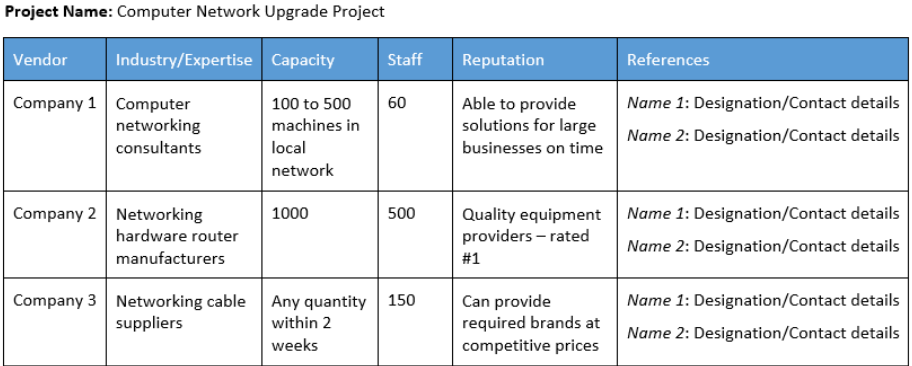
Bidder Conferences
- Meetings conducted by the buyer after issuing an RFP, but prior to submissions of a bid or proposal by the vendors.
- The buyer explains the requirements, proposed terms, and conditions, and the buyer clarifies the vendors' queries.
- Buyer ensures all prospective vendors have a clear and common understanding of the technical and contractual requirements of the procurement.
- Also known as vendor conferences, pre-bid conferences, pre-proposal conferences, and contractor conferences.
External Resource Requirements and Needs
- Moving beyond the organization to secure services and expertise from an outside source on a contract or short-term basis.
- Used frequently.
- Helps businesses to focus more on their core competencies.
Communication
Critical component of the procurement process due to the people involved.
The Communication Plan should include provisions for working with vendors or suppliers, such as:
- Periodic progress reports of supplier activities.
- Advance notification of potential supplier cost overruns or schedule delays, and acknowledgement by the project manager to the supplier.
- Formal acceptance by the project manager of supplier’s contract deliverables.
Supplier and Contracts
Contracts * are mutually binding agreements * that obligate the seller to provide the specified project or service or result and obligate the buyer to pay for it.
Customized for each agreement
Contract types:
- Fixed-price
- Cost-reimbursable
- Time-and-material (T&M)
Components of Contracts
- Description of the work being procured for the project, its deliverables, and scope.
- Delivery date or other schedule information.
- Identification of authority, where appropriate.
- Responsibilities of both parties.
- Management of technical and business aspects.
- Price and payment terms.
- Provisions for termination.
- Applicable guarantees and warranties.
Contract Types
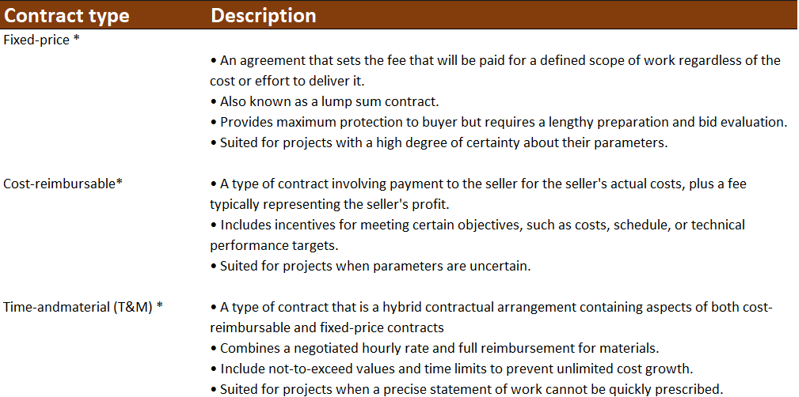
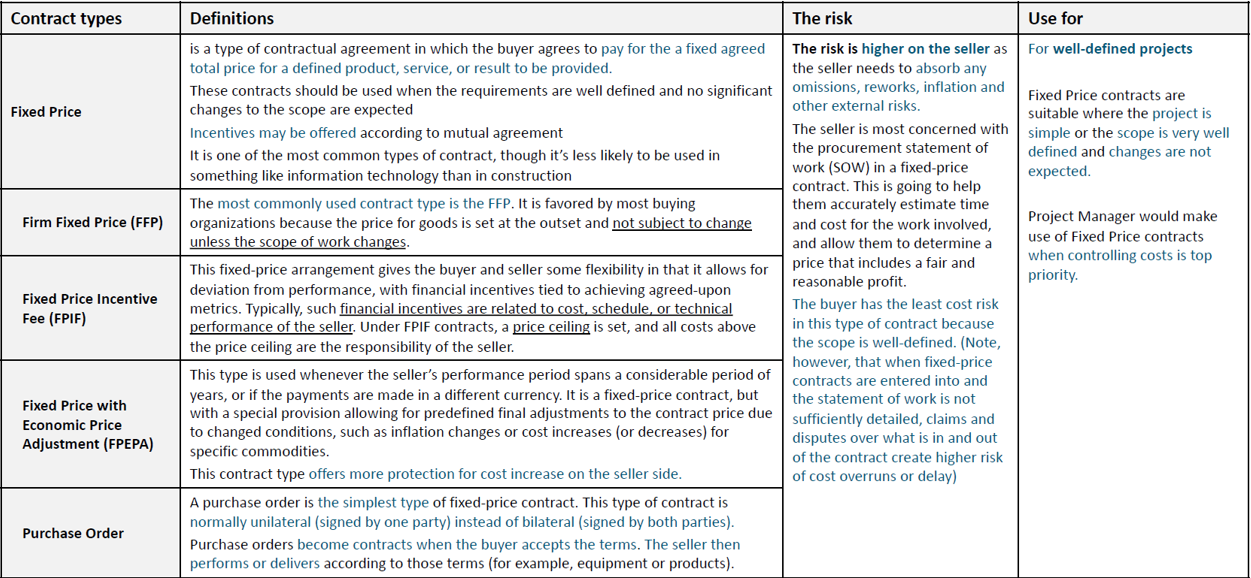
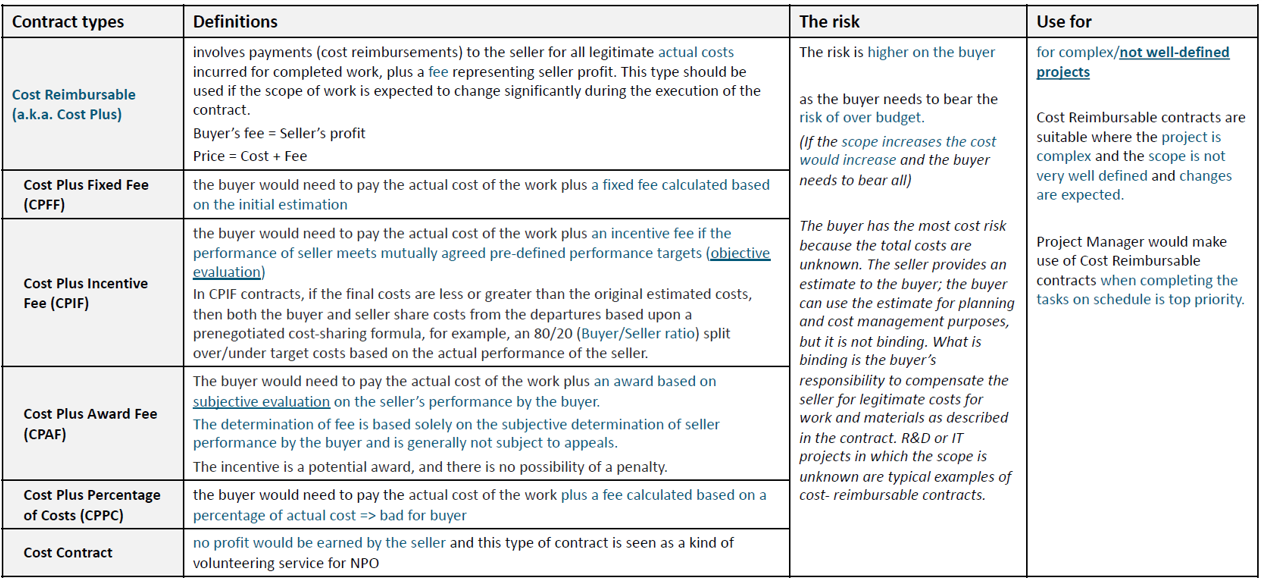

Delivery Solution
The goal of procurement is the delivery of procured goods or services by the supplier to the procuring organization.
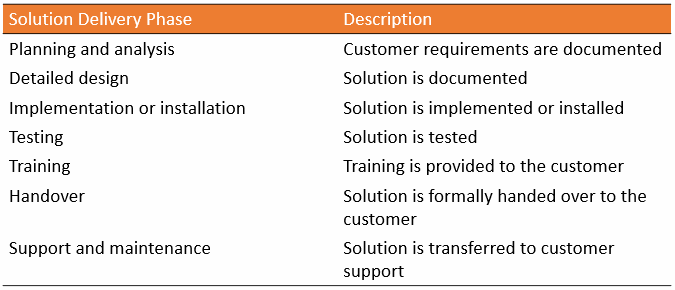
Control Procurements Process
The Control Procurements process * is the process of managing procurement relationships, monitoring contract performance, making changes and corrections as appropriate, and closing out contracts.
The other project management processes include:
- Project plan execution to formally sanction the seller's work to begin at the appropriate time.
- Performance reporting to monitor seller cost, schedule, and technical performance.
- Quality control to ensure that the quality of the seller's service or product meets contract objectives.
- Change control to ensure that changes to the contract are carefully managed and properly approved.
- Monitor and control the project risks to ensure that the risks are properly managed.
Contract Change Control System
The contract change control system * is the system used to collect, track, adjudicate, and communicate changes to a contract.
- Might be a component of the integrated change control system or it might be a separate system.
- Specifically dedicated to control contract changes.
- Specifies the process by which project contract changes can be made.
- Includes the documentation, dispute-resolution processes, and approval levels to authorize the changes to contract specifications.
Types of Contract Changes

Legal Concepts when Managing Disputes
If the buyer and seller cannot agree that the terms of a contract have been met by both parties, legal advice might be sought to resolve the dispute.
Negotiated settlements might be undertaken to arrive at a final equitable settlement of all outstanding issues, claims, and disputes by negotiation.
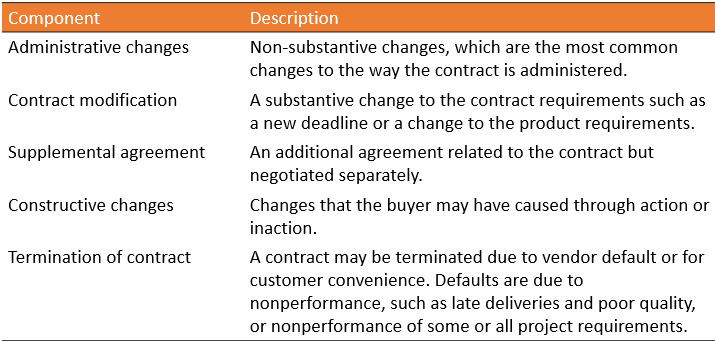
Guidelines for Handling Disputes
Have a good understanding of the differences between important legal terms that can, if ignored, have a significant impact on the project—warranty, waiver, and breach of contract.
Be sure to consult with somebody in your company's legal department or seek advice from an outside legal expert so you thoroughly understand any contracts that affect your project.
If your contract isn't written specifically to exclude inadvertent waivers, avoid doing any of the following that would waive your contract rights:
- Accept a product that fails to meet standards for quality or performance.
- Accept late deliveries.
- Overlook an aspect of non-conformance to contractual obligations.
Closing Procurements
- A procurement is closed when a written notice is provided from the buyer to the seller once a contract is complete.
- This is usually documented in the terms and conditions that were specified in the contract and the procurement management plan.
- Procurements can be closed throughout the life of the project as contracts are satisfied and closed, and might not always occur at the end of the project.
Guidelines to Close Procurements
- Ensure that all required products or services were provided by the seller.
- Make sure that any buyer-furnished property or information was returned to the buyer.
- Settle any outstanding contracting issues. Are there any claims or investigations pending on this contract?
- Conduct a procurement audit * to identify successes and failures of the procurement process and to evaluate the performance of the seller.
- Address any outstanding invoices and payments.
- Archive the complete contract file with the project archives.
- Provide the seller with formal written notice that the contract has been completed.
- Communicate that all procurements are closed and update OPA documents as needed.
Guidelines to Manage Suppliers and Contracts
- Index and store all contract correspondence for ease of retrieval.
- Develop and implement an effective contract change control system.
- Evaluate the risk of each contract change request.
- Document all contract changes and incorporate any effects of the changes into the project plan.
- Develop and implement an effective performance reporting system for the seller.
- Spell out in the contract any performance reporting specifications to be imposed on the seller.
- Set performance milestones to monitor project progress.
- If work is performed at another site, conduct site visits to determine how the seller's work is progressing.
- Submit approved invoices for payment in accordance with the contract and the project’s payment system.